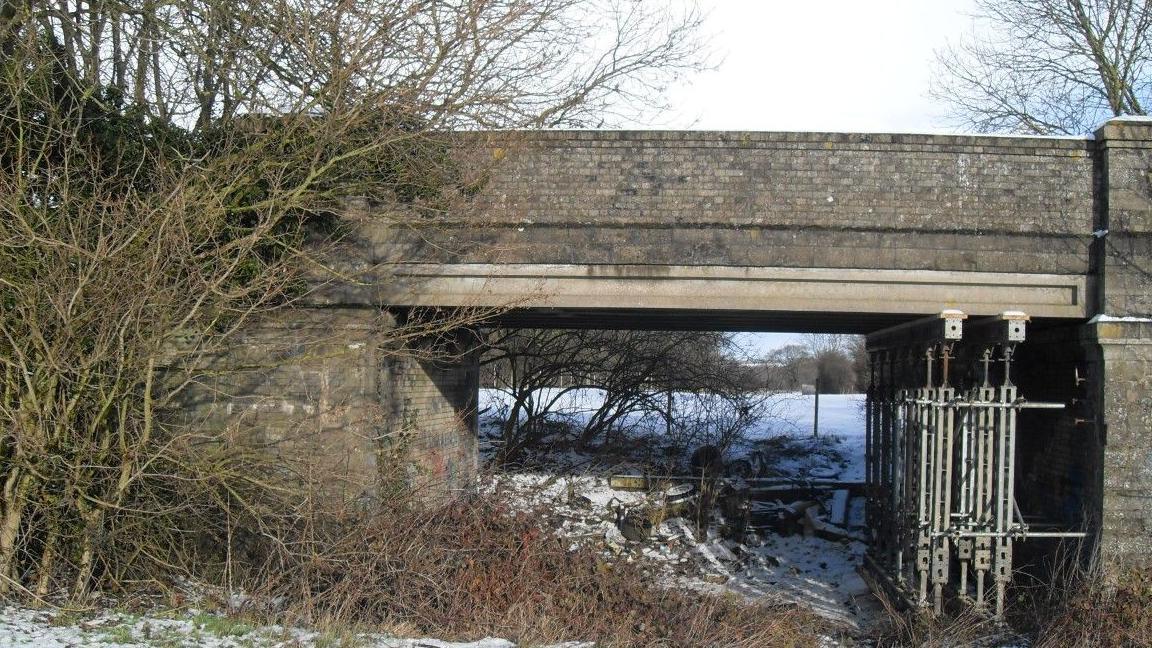Historical bridge to remain infilled by concrete
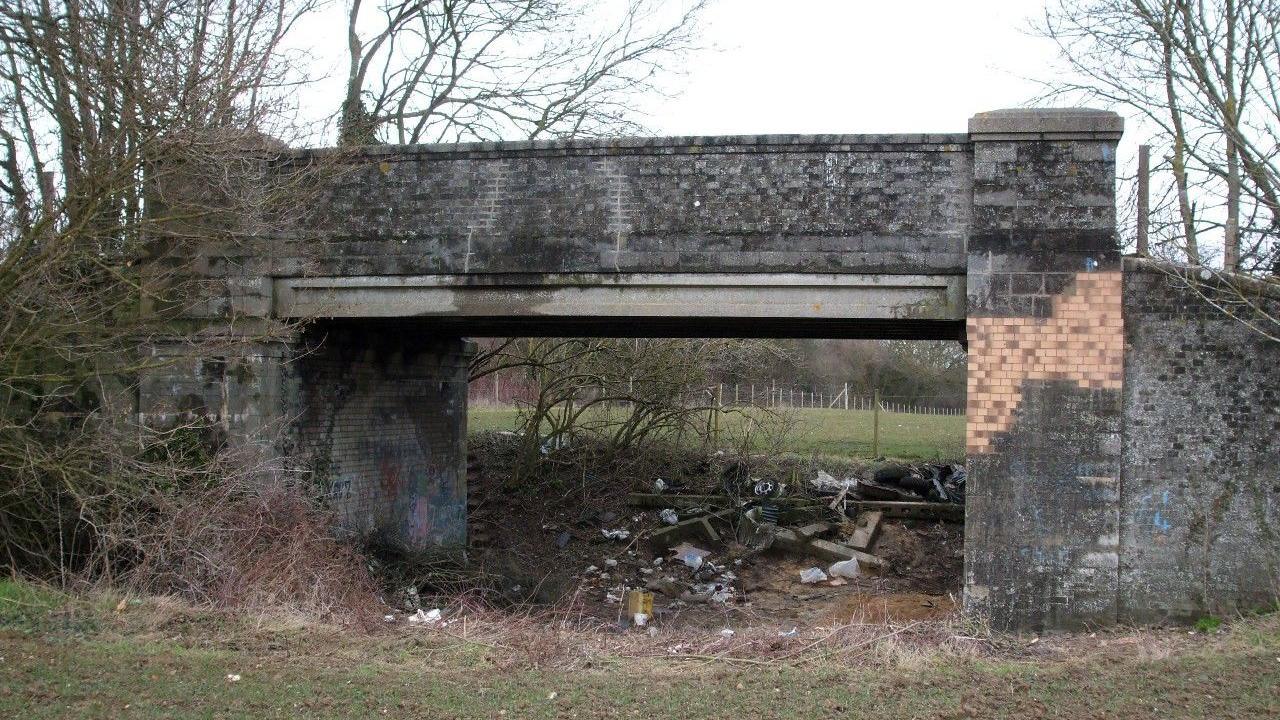
Congham Bridge, which had become unsafe, was infilled with concrete in 2021
- Published
A historical railway bridge will remain infilled by concrete after planning inspectors quashed an enforcement notice to have the concrete removed.
West Norfolk Council took action against National Highways after it poured 1,000 tons of concrete under Congham Bridge in 2021 to make the bridge safe.
Last October, councillors rejected an attempt by National Highways to apply for retrospective permission for the work to be made permanent.
National Highways appealed to the government's Planning Inspectorate, which ruled in its favour at a public inquiry, which the council said was "disappointing".

The public inquiry began at the Duke's Head Hotel in King's Lynn on 21 May
Inspector Laura Renaudon, who considered the appeal, concluded that retrospective planning permission for the work would now be granted, noting that it was an "unfortunate sequence of events".
In a report, external, she said: "The harm to the value of the heritage asset is regrettable but needs to be balanced against the asset's overall low significance, the fact that the bridge is preserved, albeit buried, and the other factors in the case."
She said that infilling the bridge allowed traffic – including agricultural vehicles - to pass over it, while reducing the "local focus of anti-social behaviour".
She added: "Accordingly I find that the development complies with the development plan for the area."
About 3,000 statements and pieces of evidence were submitted ahead of the public inquiry and experts on both sides appeared before the inspector.
Responding to Wednesday's ruling, a council spokesperson said: "This is very disappointing news and we know that objectors and campaigners will feel the same.
"We believed that we had put forward a strong case but accept the inspector’s decision in this matter."
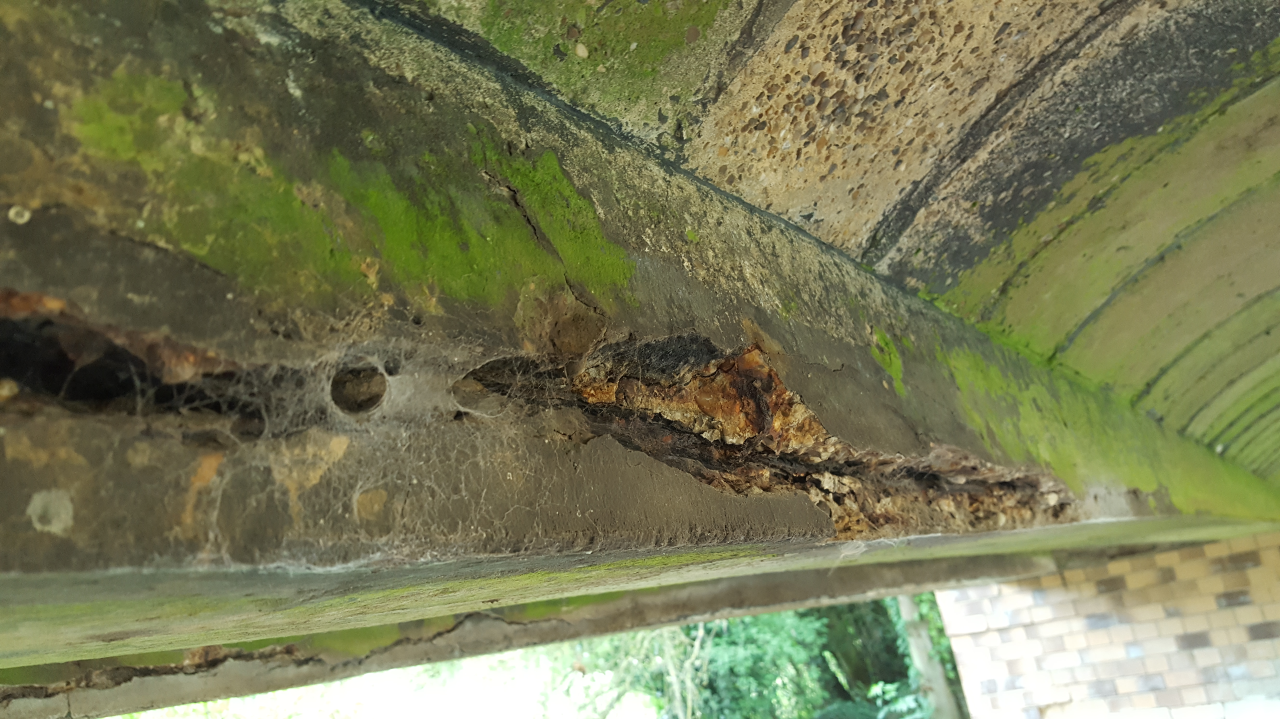
National Highways says the bridge had "serious structural issues" before it was infilled
Over the last two decades, Congham Bridge, which was built in 1926, had become corroded and began to develop fractures.
National Highways argued it had become unsafe, external and that filling it with concrete, as a temporary measure, was the most cost-effective way to support the structure.
However it later broke permitted development regulations when it failed to remove the concrete within 12 months.
Campaigners argued that the concrete should be removed and the bridge maintained.
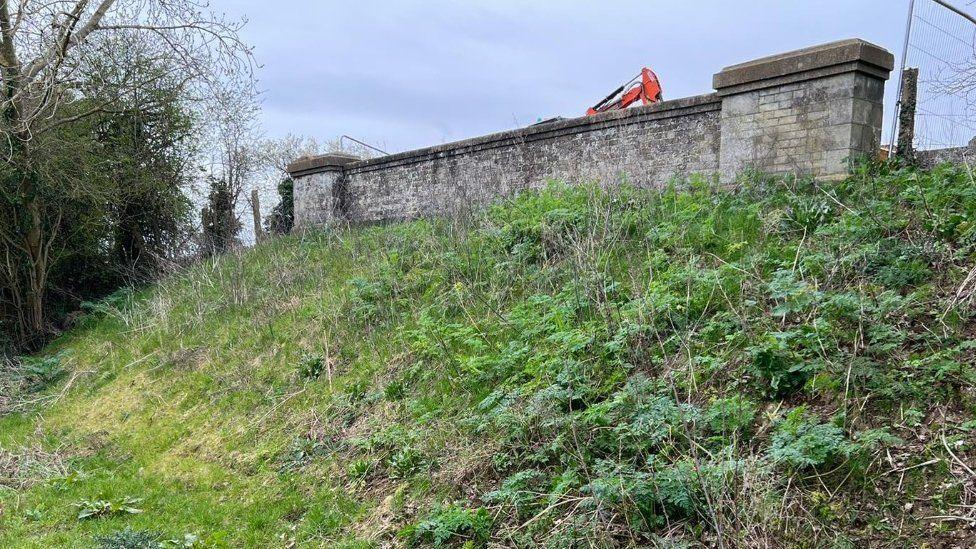
The bridge was infilled with "engineering fill and foam concrete"
Graeme Bickerdike, a member of The HRE Group of engineers, heritage campaigners and greenway developers, said he was disappointed by the Planning Inspectorate's decision.
"This was an unnecessary and destructive scheme that has resulted in the loss of a noteworthy heritage asset of regional significance," he said.
"As we transition to more sustainable forms of transport, legacy railway structures have the potential to play an increasingly important role and their value must be recognised by those responsible for their custodianship.
"The loss of this one - simply to reduce liabilities - was short-sighted and indicative of cultural issues."
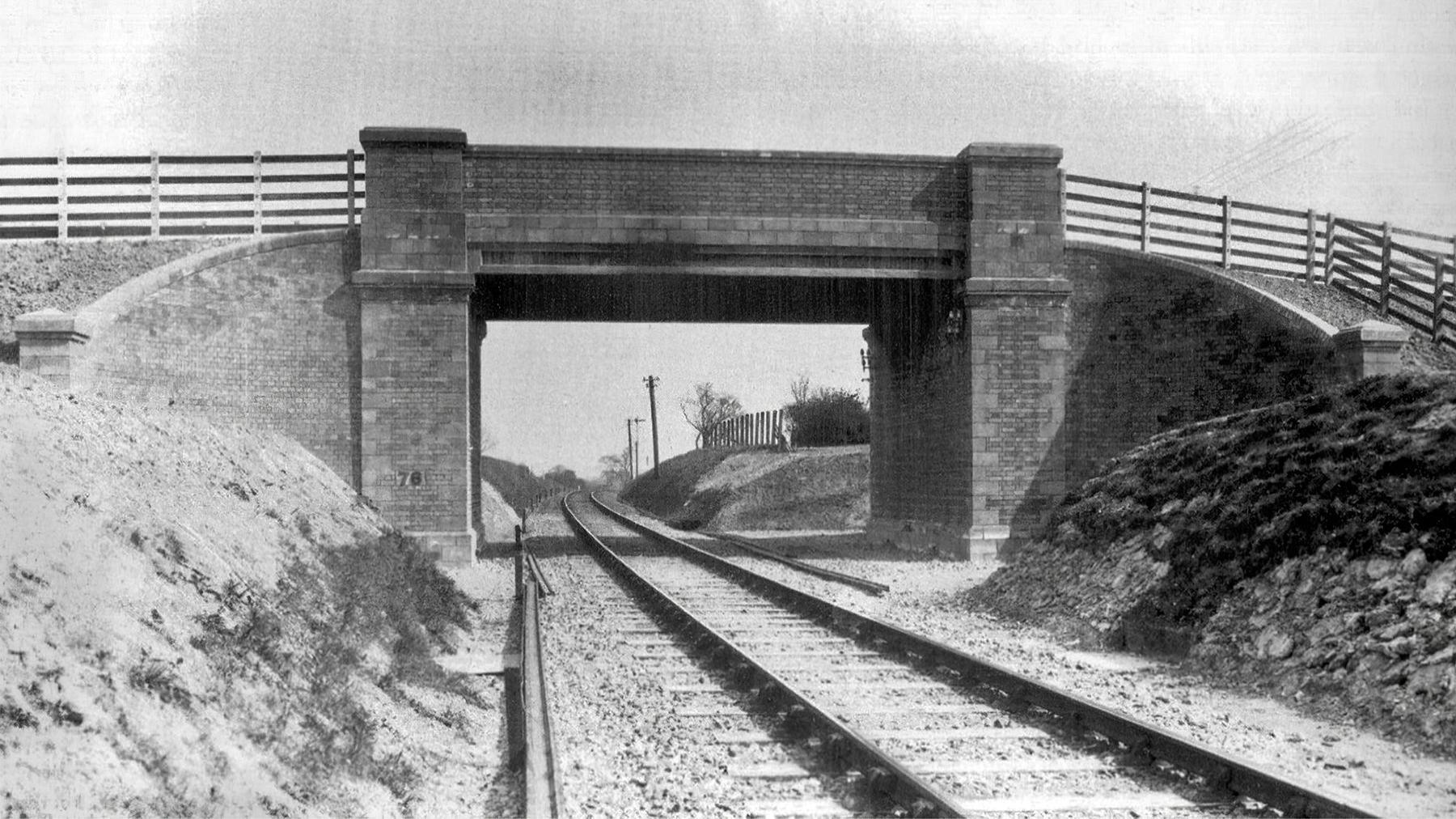
The bridge had curved wingwalls and a "rare surviving example of an early modular concrete structure"
Congham Bridge is one of just six which were built in the 1920s by William Marriott, engineer of the Midland and Great Northern Railway.
The railway route once connected South Lynn with Fakenham before continuing on to Great Yarmouth.
The line closed in 1959, preceding the Beeching cuts the following decade, which led to vast sections of the railway network to shut.
But the bridge has remained in use, carrying a quiet country road, St Andrews Lane, across the now-abandoned track.
Hélène Rossiter, head of the Historical Railways Estate at National Highways, said she welcomed the Planning Inspectorate's decision.
"This work was essential to ensure the bridge can safely carry traffic, including the many agricultural vehicles that rely on its use," she said.
"I am pleased that by following the democratic process this important decision was tested at a public inquiry with the outcome supporting our work and putting an end to many of the assertions that have been made during this process."
Congham Bridge is one of 51 bridges that have been infilled since 2013 at a cost of £8m, according to the Historical Railways Estate Group.
Engineers have recently completed digging out hundreds of tonnes of concrete from Great Musgrave Bridge in Cumbria after Eden District Council ordered it to restore the Victorian structure last year.
Follow Norfolk news on Facebook, external, Instagram, external and X, external. Got a story? Email eastofenglandnews@bbc.co.uk, external or WhatsApp us on 0800 169 1830
- Published21 May 2024
